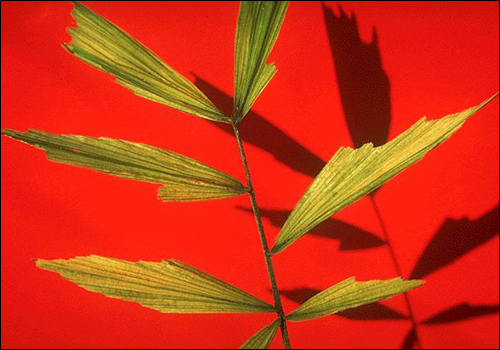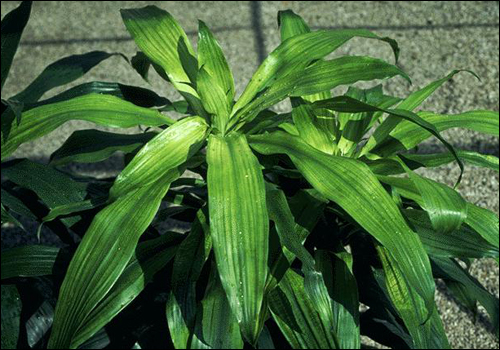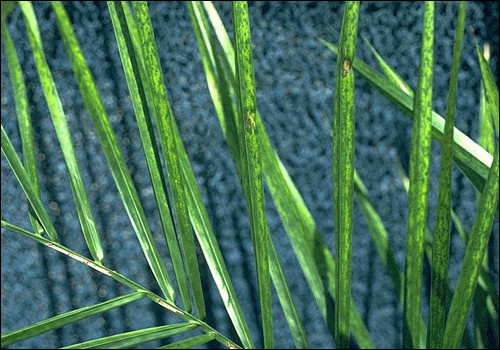Deficiency of Iron
There is probably a deficiency of Iron. Iron deficiency appears as a general or interveinal chlorosis on the newest leaves that become totally yellow in severe cases. As the deficiency progresses, new leaves or leaflets may have necrotic tips with reduced size. New leaves of queen and Rhapis palms are uniformly chlorotic with extensive green spots. In species that do not exhibit this spotting or interveinal chlorosis, symptoms are virtually indistinguishable from those of Sulfur deficiency. Iron deficiency symptoms are fairly common on monocots in Florida, especially when planted too deeply or grown in poorly aerated soil.
Plant is a monocot or noncotyledonous (includes palms, Pandanus, draceanas, yuccas, cycads and others
- Symptoms are most severe on the newest leaves
- New leaves are uniformly chlorotic, chlorotic with faintly green veins, or chlorotic with green spots scattered throughout the leaflets. Interveinal necrotic streaks are not present, but tip necrosis may be evident
- New leaves exhibit interveinal or uniform chlorosis with or without green spots scattered throughout the leaflets. Tip necrosis may be present in severe cases
- New leaves are uniformly chlorotic, chlorotic with faintly green veins, or chlorotic with green spots scattered throughout the leaflets. Interveinal necrotic streaks are not present, but tip necrosis may be evident
Iron Deficiency in Paurotis Palm (Acoelorrhaphe wrightii)

Iron Deficiency in Fishtail Palm (Caryota mitis)

Iron Deficiency in Dracaena (Dracaena sp.)

Iron Deficiency in Queen Palm (Syagrus romanzoffiana)


